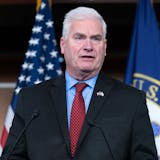Over a year ago, as the Vikings went through the offseason after coming up one game short of playing in the Super Bowl at U.S. Bank Stadium, a theme emerged: Decisionmakers weren't going to be lulled into a false sense of security by their 2017 success.
This showed up most obviously in their pursuit of free agent quarterback Kirk Cousins. While the Vikings almost certainly could have retained Case Keenum, the primary QB during their 13-3 season in 2017, they instead spent $84 million guaranteed for three seasons of Cousins.
Sheldon Richardson was added to the defense in another big-money move (albeit for just one season), but the Cousins move was the one most of us rightfully fixated upon in 2018.
Having witnessed the regression from 2009 to 2010, when the Vikings essentially brought back all their starters the last time they came that close to the Super Bowl, I thought the Cousins move was a risk worth taking.
That it didn't work out to the degree everyone hoped in 2018 – a chaotic season on several fronts that ended 8-7-1 and short of the playoffs, let alone the Super Bowl – doesn't mean it was a bad decision.
In retrospect, however, it is fair to wonder if a different area in which the Vikings chased an upgrade instead of hanging onto a known commodity was really worth it.
Vikings fans like to think of the kicking game as being perpetually unsettled since Blair Walsh's playoff miss ended the 2015 season, but the operation in 2017 was actually fine.
Kai Forbath made 32 of 38 field goals in the regular season (including 6 of 9 from 50-plus yards). He missed five extra points, which is as baffling as it is less than ideal, but for the most part he was solid.

